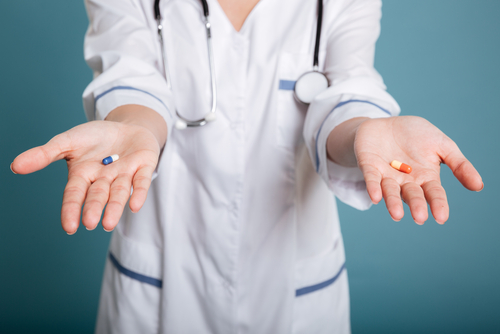Results: Ponvory Outperforms Aubagio in OPTIMUM Clinical Trial

In the OPTIMUM clinical trial, Ponvory (ponesimod) significantly outperformed Aubagio (teriflunomide) in reducing relapse rates, fatigue, and evidence of brain damage among people with relapsing multiple sclerosis (MS).
Based on these results, Ponvory has now been approved in the U.S. and the European Union as a treatment for adults with relapsing forms of MS.
The approvals — in the U.S. in March and in the EU in May — cover clinically isolated syndrome (CIS), relapsing-remitting MS (RRMS), and active secondary progressive MS (SPMS).
The results from OPTIMUM have been published in JAMA Neurology, in a study titled “Ponesimod Compared With Teriflunomide in Patients With Relapsing Multiple Sclerosis in the Active-Comparator Phase 3 OPTIMUM Study.” The study was funded by Janssen, which markets Ponvory.
The OPTIMUM Phase 3 trial (NCT02425644) enrolled 1,133 participants with relapsing MS at 162 centers worldwide. The majority of participants (97.5%) had RRMS, while the remaining 2.5% had SPMS. Of note, the low number of participants with SPMS was noted as a limitation of the study.
The participants were randomly assigned to receive treatment with either Ponvory (20 mg) or Aubagio (14 mg) tablets, taken daily for 108 weeks (about two years). OPTIMUM was “the first phase 3 study comparing 2 oral disease-modifying therapies for relapsing multiple sclerosis,” the researchers had noted.
The study’s main goal was to determine the different treatments’ effect on annual relapse rate or ARR. The results showed that patients taking Ponvory experienced 0.202 relapses per year over the trial’s duration, compared with 0.290 for those on Aubagio. This meant that Ponvory reduced ARR by 30.5% compared with Aubagio.
Among participants on Ponvory, scores on the Fatigue Symptom and Impact Questionnaire–Relapsing Multiple Sclerosis (FSIQ-RMS), a measure of fatigue and related symptoms, were about the same at the end of the study as at the beginning. Specifically, the average change was 0.01 points. By contrast, the average score for those on Aubagio increased by 3.56 points, indicating worsening fatigue. The difference between the treatments was statistically significant, the data show.
Ponvory also significantly outperformed Aubagio in terms of reducing brain lesions visible on an MRI scan: the mean total lesions per year was 56% lower with Ponvory than with Aubagio. Additionally, mean brain volume decreased by significantly less among participants on Ponvory (0.91%) than Aubagio (1.25%).
There were no significant differences between the two treatments in terms of 12-week or 24-week (roughly three-month and six-month) confirmed disability accumulation (CDA). The researchers noted that there were relatively few cases of CDA in the trial for both treatments, which may have limited the study’s ability to detect a statistically meaningful difference.
At the end of the study, 25% of participants on Ponvory and 16.4% of those on Aubagio had no evidence of disease activity (NEDA-3). That clinical measure was defined as no relapse, no 12-week CDA, and no new or enlarging brain lesions. Statistical analyses showed that the likelihood of NEDA-3 was significantly higher with Ponvory, by about 70%. Analyses that also took into account changes in brain volume showed a similar benefit for Ponvory compared with Aubagio.
In total, nearly 90% of participants from both treatment groups experienced adverse events or side effects. The most common of these included headache, the common cold, hair loss, and abnormally high levels of a liver enzyme called ALT (alanine aminotransferase).
Adverse events that led to treatment cessation were more common among participants on Ponvory than Aubagio (8.7% vs. 6%). Common events that led to treatment discontinuation included shortness of breath, elevated levels of ALT and another liver enzyme called aspartate aminotransferase, and macular edema, which is fluid accumulation in the eye that can distort vision.
However, discontinuation due to a lack of efficacy was more common for participants on Aubagio (4.3%) than Ponvory (1.9%). The researchers noted that, overall, discontinuation rates in OPTIMUM “were at the lower end compared with frequencies reported in other phase 3 studies in relapsing MS.”
Rates of serious adverse events were similar in both treatment groups: 8.7% for Ponvory and 8.1% for Aubagio. “Overall, no pattern or clustering of serious events was observed in either treatment group,” the researchers wrote.
Two participants in the Aubagio group died during the study; neither death was deemed related to treatment.
The researchers concluded that Ponvory was, overall, well-tolerated, and that the safety-related findings were consistent with prior studies of the medication and others in its class.
Ponvory is a selective S1P1 immunomodulator designed to “trap” immune cells inside of immune organs called lymph nodes, which prevents these immune cells from going into the nervous system and causing damaging inflammation.






